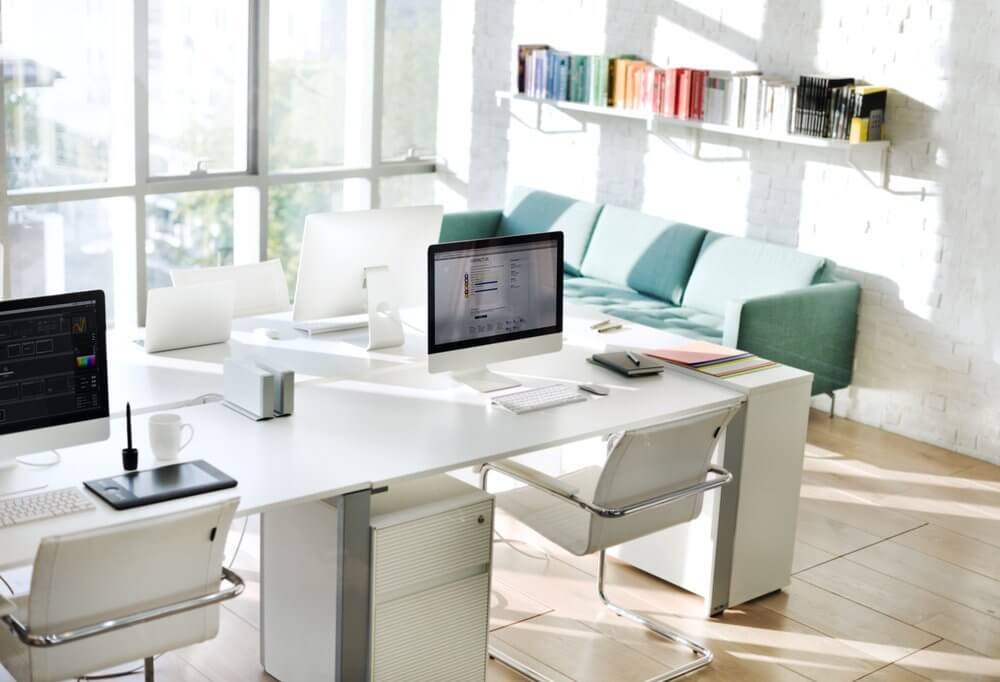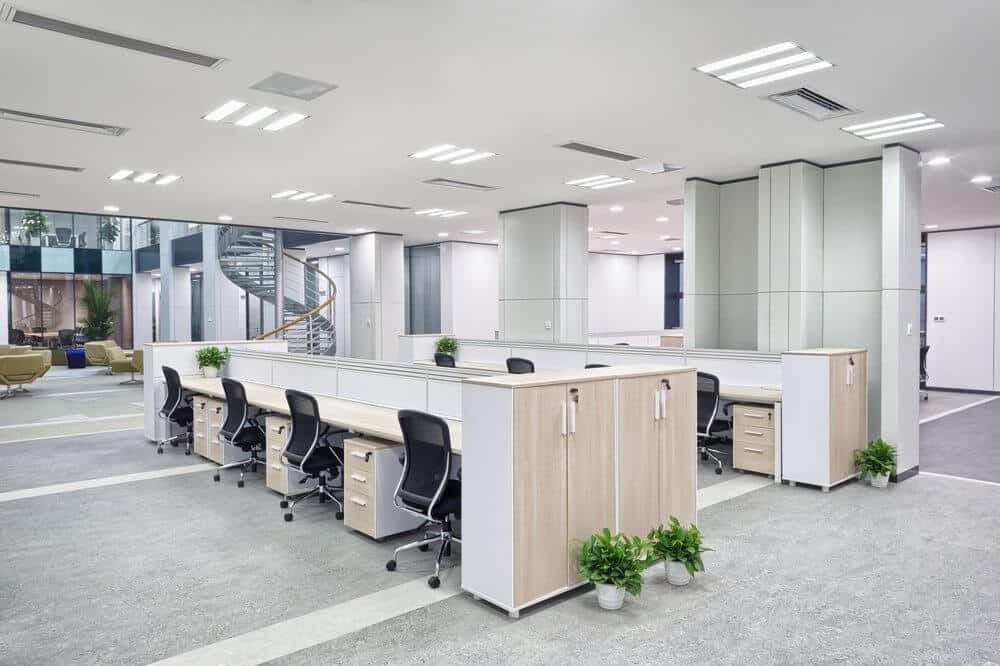
Great offices can go beyond simply providing a space for employees to work. If you understand how your space affects the bottom line, you can leverage your facility to produce revenue, save time, affect branding, and drastically improve employee productivity.
Saving money with simple tweaks around your office space might be easier than you think. As a facility manager, you have a big impact on workspace ROI. Your strategic decisions can save your company thousands of dollars every year.
If you’re a facility manager making a business case for an office upgrade or trying to optimize your current space, here are some of the ways your office space can contribute to productivity and ROI, as well as some ways to reduce costs.
Reflect your company culture

Your office can be used as an asset for attracting and retaining clients. Depending on your industry, you may have many in-house meetings, so you want your space to reflect the ease and convenience that you offer to your customers. Having an easy-to-navigate space with clear wayfinding, comfortable meeting rooms, and innovative technologies can express your company values and brand to clients. While you may not be able to measure the exact ROI resulting from each in-house meeting, your office can help retain clients and encourage prospective clients to do business with you. Providing your clients with a great in-person experience can help solidify positive working relationships and encourage continued business.
Reduce waste

Running an office can be costly. Thankfully there are many opportunities to minimize the impact these costs have on your bottom line.
As a facility manager, you should track your office’s space and energy use.
It’s a good idea to invest in comprehensive facility management software that can help you identify underused office space. You can then make informed decisions about downsizing or relocating staff to cut costs. Managers can use space management tools to find unused square footage that can be put to better use or to support a decision to downsize. With the right software, you can easily coordinate employees’ workstations while staying informed.
You can also maximize space by introducing a hot desking system where employees use temporary workspaces are provided with real-time access information, instead of having a stationary space. With the right software, you can easily coordinate employees’ workstations while staying informed.
Energy costs are a significant expense that can also be addressed with a sustainable office design and effective building automation system. Using data and visuals from a workplace management system can help you understand where your office can reduce internal costs.
Turn off computers during downtime
The 2009 PC Energy Report conducted by Harris Interactive polled computer users in the UK and Germany about office computer usage. They discovered that turning off computers before leaving the office could save $1.2 billion in Germany and about $400 million in the UK. You can further your conservation efforts by investing in power-friendly monitors, switching to energy-saving settings, and charging computers at night when electricity rates may be lower.
Make your office kitchen green
There are many ways to cut down on energy usage in your kitchen. Consider asking employees to unplug electronics like coffee makers and toasters when they aren’t in use. Or, if you have a dishwasher or washing machine, ensure employees use the eco-cycle and that the appliances are fully loaded before turning them on. Providing a refrigerator of water bottles could be another way your office is spending unnecessarily. Installing a water filtration system or purchasing a filtered water cooler is a far more budget-wise option. While these green tricks may seem small, every little bit counts when you’re managing a large space.
Alleviate your office’s printer addiction
In a world that operates increasingly on screens, our need for printing has decreased. That means your office can save on expensive ink cartridges or toner and unnecessary paper. By using two-sided copying, you can use half the paper and save 50% on material costs. Certain document management solutions can also identify pages that are unnecessary for print. Instruct employees to avoid printing in color, use the “print selection” and “shrink to print” functions on their word processors, and use PDFs rather than print-outs. You can also save on energy costs by choosing printers with an “auto off” switch, and you can earn money back for recycling toner and ink cartridges.
Recruit top talent
Talent scarcity is one of the most prominent challenges facing workplaces around the world today. Younger generations in the workforce have a new set of needs, and many of them are opting for jobs that promise flexibility, strong culture, and alignment with their personal values. Facility managers should understand that their office can be a powerful recruiting tool by reflecting these central values.
An office’s layout affects many cultural components like corporate hierarchy, flexible work styles, and team interaction. Being aware of the values that an office reflects to potential hires can help FMs and other managers make sure their office is attracting the best talent.
Drive productivity

There is already strong evidence behind the relationship between office design and productivity, and there are many ways FMs can optimize a space to improve office output. Companies can improve creativity and wellness by adding natural light or biophilic design to their space, which have been linked to higher cognitive function in employees. Providing opportunities for personal customization in the office can also boost overall productivity and sense of autonomy. Facility managers should be sure to measure the impact of office changes to better pinpoint how the office is affecting productivity to ensure that all changes are benefiting their employees.
A great office space can move the needle on a host of business goals. From recruiting top talent to ensuring office-wide productivity, your physical office can greatly benefit your business. Facility managers that can align their office space with overarching business goals have the opportunity to create a more efficient environment with a higher return on investment.
Learn more about how OfficeSpace software can help you to optimize your office space.
Photos: Shutterstock / Rawpixel, Shutterstock / zhu difeng, Shutterstock / Monkey Business Images, Shutterstock / Jacob Lund



